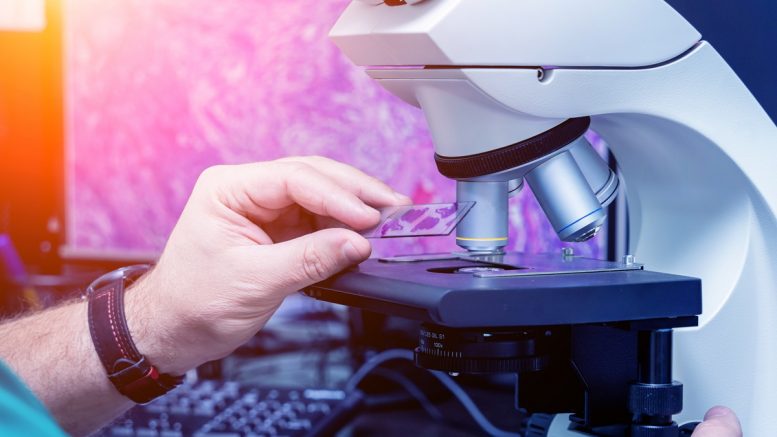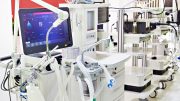Artificial intelligence (AI) is poised to transform the landscape of disease detection and diagnosis, offering substantial benefits in terms of efficiency, accuracy, and the speed of screening for conditions such as breast, bowel, and cervical cancer. As pathology departments nationwide adopt digital slide processing, the integration of AI into these workflows presents an opportunity to significantly enhance diagnostic processes. Nevertheless, implementing AI-powered pathology is accompanied by important security and governance challenges that must be tackled to enable safe and effective use.
AI’s impact is already evident across healthcare, from advanced language models to cutting-edge research tools. In pathology, AI’s potential to analyse extensive datasets and recognise patterns in tissue samples offers a powerful way to identify diseases more swiftly and accurately. The use of traditional glass slides is costly, slows down diagnosis, creates security concerns, and hampers collaborative efforts. AI’s ability to assist pathologists in clinical settings opens the door to faster, more accurate results, transforming routine analysis and complex diagnostic tasks. The technology can support early diagnosis of critical illness, with results delivered in a matter of hours rather than weeks. Given the NHS’s target of a 75% cancer diagnosis rate within 28 days, and the current delays impacting tens of thousands of patients, the integration of AI is becoming more urgent. Especially as a significant portion of pathologists in the UK are aged over 55 and 60% are nearing retirement age, making it essential to enhance diagnostic capabilities and streamline workflows.
One of the most promising applications of AI in pathology is the analysis of histology samples to detect patterns based on specific biomarkers. This can lead to earlier and more accurate diagnoses, significantly reducing the time it takes from biopsy to results. AI-based image analysis algorithms can automate many time-consuming tasks, enabling laboratories to work more efficiently. However, despite these benefits, widespread adoption of AI in the pathology has been slow, mainly due to the costs of implementation, calibration, and ongoing maintenance.
The digitisation of pathology is still in its early stages in the UK, presenting a significant opportunity to accelerate diagnosis times and improve patient outcomes. With a faster diagnostic pathway, patients have more treatment options, the financial impact is reduced and ultimately, these small gains save lives. As pathology departments begin this transformation, it is crucial to consider how AI can be integrated in a secure and effective manner.
Bringing AI to the data centre
A key consideration is where to process this data. It is generally more secure and efficient to bring AI capabilities into a centralised data centre rather than distributing data across multiple external systems and suppliers. Centralised data processing reduces security risks and ensures greater control over data governance and business processes. Whereas a distributed model requires the careful selection of AI suppliers and a robust ecosystem management strategy to handle multiple agreements and data processing protocols.
To adopt AI safely and securely, pathology departments must address several critical factors. First, limiting exposure by minimising the number of external AI systems involved can protect against vulnerabilities. Each pathology department has unique workflows, and integrating AI systems into these workflows without compromising security is paramount. Sending images via secure links, for example, creates exposure and opportunities for vulnerabilities to be introduced, if not properly managed.
Centralising AI within a data centre provides a controlled environment where data governance and security protocols can be more effectively enforced. This approach also mitigates the risks associated with having data flow into different companies, each with its own architecture and security practices. In the event of an application failure, a centralised system offers greater resilience and reliability.
The importance of adopting AI safely and securely cannot be emphasised enough. Recent cyber-attacks targeting NHS pathology testing organisations have clearly demonstrated the disruption that can be caused through security breaches, and the impact this has on operations and outpatient appointments. By maintaining control over AI applications and data within a centralised system, pathology departments can better protect against such threats.
A second pair of eyes
AI is not intended to replace human pathologists but to expand their capabilities. It has the potential to serve as a ‘second pair of eyes,’ automating and recognising specific biomarkers and analysing large sets of slides. AI’s role is to support the rapid identification and prioritisation of cases, provide second opinions and enable pathologists to focus on more nuanced diagnostic decisions.
Integrating AI into pathology offers a path to accelerate diagnosis and improve patient outcomes as the sector embarks on its digital transformation. By carefully considering the security and governance implications, pathology departments can work together with technologists to optimise AI’s role in healthcare. This collaboration will enable algorithms to adapt based on real-world clinical feedback, ensuring reliable, effective implementation in daily practice. In doing so, AI can help set a new standard for the field, driving better diagnostic accuracy, operational efficiency, and ultimately, improved patient care.
By Jonathan Bridges, Chief Innovation Officer at Exponential-e





